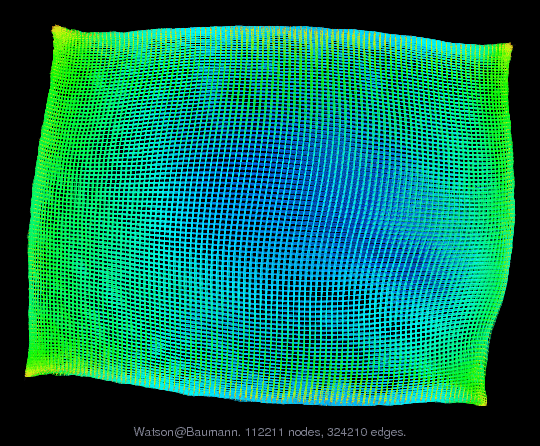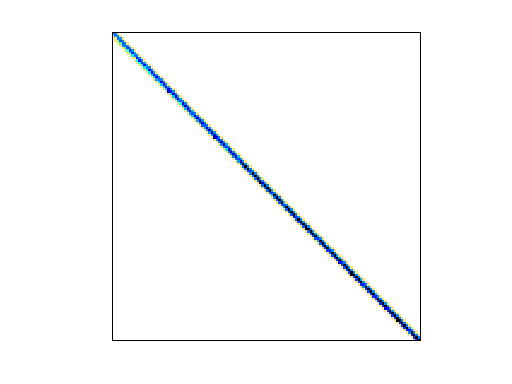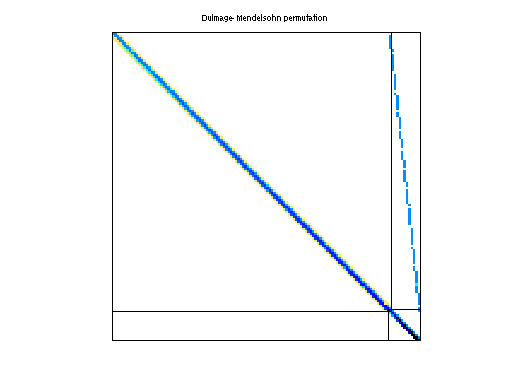
Matrix: Watson/Baumann
Description: chemical master eqn, aij*h = prob of i->j transition in time h (Markov model)
 |
| (undirected graph drawing) |
 |
 |
| Matrix properties | |
| number of rows | 112,211 |
| number of columns | 112,211 |
| nonzeros | 748,331 |
| structural full rank? | yes |
| structural rank | 112,211 |
| # of blocks from dmperm | 2 |
| # strongly connected comp. | 2 |
| explicit zero entries | 12,300 |
| nonzero pattern symmetry | symmetric |
| numeric value symmetry | 0% |
| type | real |
| structure | unsymmetric |
| Cholesky candidate? | no |
| positive definite? | no |
| author | L. Watson and J. Zhang |
| editor | T. Davis |
| date | 2007 |
| kind | 2D/3D problem |
| 2D/3D problem? | yes |
Notes:
The ODE system \frac{dp}{dt}=Qp is what we call a chemical master equation (a
Kolmogorov's backward/forward equation). Q is a sparse asymmetric matrix,
whose off-diagonal entries are non-negative and row sum to zero. On each row,
q_{ij}h gives the probability the system makes a transition from current state
i to some other state j, in small time interval h. By "state", we mean a
possible combination of number of molecules in each chemical species. Now, h
is small enough so that only one reaction happens. In this way q_{ij} is
nonzero only if there exists a chemical reaction that connects state i and j,
i.e. j=i+s_k, s_k's are constant state vectors that correspond to every
reaction. Say we have M reactions, then there are at most M+1 nonzero
entries on each row of Q. On the other hand, the number of possible
combination of molecules is huge, which means the dimension of Q is huge.
The linear system we want to solve is (I - Q/lambda)x=b, and we have
to solve it several times. (Here lambda is a constant). Problem.A is the Q
matrix. This is a medium test problem; the largest has dimension 10^8.
It has the nonzero pattern of a 11-by-101-by-101 mesh.
| Ordering statistics: | result |
| nnz(chol(P*(A+A'+s*I)*P')) with AMD | 26,112,094 |
| Cholesky flop count | 2.7e+10 |
| nnz(L+U), no partial pivoting, with AMD | 52,111,977 |
| nnz(V) for QR, upper bound nnz(L) for LU, with COLAMD | 61,376,869 |
| nnz(R) for QR, upper bound nnz(U) for LU, with COLAMD | 110,190,364 |
Note that all matrix statistics (except nonzero pattern symmetry) exclude the 12300 explicit zero entries.
For a description of the statistics displayed above, click here.
Maintained by Tim Davis, last updated 12-Mar-2014.
Matrix pictures by cspy, a MATLAB function in the CSparse package.
Matrix graphs by Yifan Hu, AT&T Labs Visualization Group.